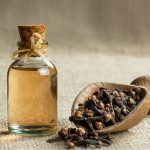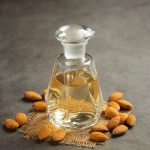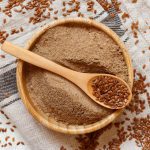Alarm bells inevitably tend to go off when you see your child scratching their head.…
Read MoreItchy, scratchy head? Haven’t we all known that annoying feeling that stops us dead in our tracks until we scratch to our heart’s content. The relief once we’ve managed to scratch the itch away. Followed by embarrassment of white flakes around our shoulders. Dandruff is that nemesis we’ve all lived with at some point.
Dandruff is a condition characterized by the skin on your scalp flaking off. It can be caused by:
Meanwhile, stress and cold, dry weather can make dandruff worse.[1][Dandruff]. Mayo Clinic.
In Ayurveda, this condition is described as “darunaka” which is classified as a kshudra roga or minor disease. It is thought to occur due to an imbalance in the doshas, with pitta dosha, and vata dosha being primarily involved. According to Ayurveda, a range of factors can contribute to the development of dandruff:
Since Ayurveda takes a holistic look at the factors that contribute to the development of dandruff it also seeks to address the problem holistically. It looks at
Research shows that camphor has antifungal properties and acts against Malassezia, the fungus implicated in the development of dandruff.[6]Kim, Young-ju, Guen-bae Hwang, and Young-Bae Seu. “Antifungal activity of borneolum (Borneo-Camphor) from Dryobalanops aromatica against Malassezia furfur.” Microbiology and Biotechnology … Continue reading
Lemon juice is another natural ingredient which inhibits Malassezia.[7]Kumar, Saneesh. “Analysis on the natural remedies to cure dandruff/skin disease-causing fungus-Malassezia furfur.” Adv Bio Tech 12, no. 07 (2013): 01-05.
Lavender oil is another natural ingredient with antifungal properties.[8]Muyima, NY Osée, and Lerato Nkata. “Inhibition of the growth of dermatophyte fungi and yeast associated with dandruff and related scalp inflammatory conditions by the essential oils of … Continue reading
Ayurvedic practitioners traditionally recommend using hibiscus flowers along with other natural ingredients to tackle dandruff. It is worth noting that research indicates that both hibiscus flowers and amla act against Malassezia. As do tulasi oil and tulasi extracts.[9]Sibi, G., Md Ansar Alam, Jhanvi Shah, and Masna Razak. “Susceptibility pattern of Malassezia species to selected plant extracts and antifungal agents.” International Journal of Green … Continue reading[10]Prabhamanju, M., S. Gokul Shankar, and K. Babu. “Herbal vs. Chemical Actives as Antidandruff Ingredients-Which Are More Effective in the Management of Dandruff?–An Overview.” … Continue reading
Many ayurvedic practitioners recommend using gram flour and curd for tacking dandruff. Curd and gram flour are considered to be great cleansers which can help clean your scalp.
Amla has antifungal properties which make it useful for treating dandruff.[11]Sibi, G., Md Ansar Alam, Jhanvi Shah, and Masna Razak. “Susceptibility pattern of Malassezia species to selected plant extracts and antifungal agents.” International Journal of Green … Continue reading
Another remedy for dandruff frequently recommended by ayurvedic practitioners is fenugreek or methi seed paste.[12]Sharuti Sarin, Sukhpreet Kour.[EFFECTIVE AYURVEDIC REMEDIES FOR DARUNAKA (DANDRUFF)]. World Journal of Pharmacetical and Life Sciences. 2017.
Here’s another traditional remedy for dandruff that is backed by science – aloe vera. One study found that the application of an aloe vera extract reduced both itching and scaliness and in people with this condition.[13]Vardy, D. A., A. D. Cohen, T. Tchetov, E. Medvedovsky, and A. Biton. “A double-blind, placebo-controlled trial of an Aloe vera (A. barbadensis) emulsion in the treatment of seborrheic … Continue reading
Here are a few things that you can do to keep dandruff at bay.
1. Design a suitable hair care routine: Your hair care routine must be tailored to your needs. For instance, if your scalp tends to be oily, shampooing everyday may be a good idea. Meanwhile, if you have dry hair and a sensitive scalp, you might need to shampoo less frequently and use a conditioning treatment in between your shampoo days.
2. Brush daily and how to work it: The hair should be brushed daily to improve circulation and remove any flakes. The most effective way to brush the hair is to bend forward from the waist with the head down towards the ground and brush from the nape of the neck towards the top of the head.
3. Massage routine: The scalp should also be thoroughly massaged every day, using fingertips and working systematically over the head. This should be done just before or after brushing the hair. Like brushing, this stimulates the circulation, dislodges dirt and dandruff and encourages hair growth.
4. Clean your comb/brush: Disinfect your comb to avoid auto-infection once a week. Similarly, do not share a comb
5. Keep stress under control: Stress may trigger or worsen dandruff. Try meditation or yoga to manage stress.
6. Have a healthy balanced diet: A diet that has sufficient amounts of nutrients such as B vitamins, zinc, and omega Omega-3 fatty acids may be helpful in preventing dandruff.
7. Get some sun: Sunlight may help control dandruff. But remember not to overexpose yourself. Exposure to ultraviolet light increases your risk for skin cancer and damages your skin. Always use sunscreen when you’re out in the sun.
8. Minimize the use of hair styling products: Excessive use of styling products can build up on your scalp and hair and make them oilier.[14][Dandruff]. Mayo Clinic.
References
| ↑1, ↑14 | [Dandruff]. Mayo Clinic. |
|---|---|
| ↑2, ↑5 | Daulatkar, Kavita. “Dandruff-Ayurveda management for better hair care.” Journal of Ayurveda and Integrated Medical Sciences 3, no. 02 (2018): 85-88. |
| ↑3 | Suresh, Suramya, Akhilesh Shukla, Haroon Irshad, Leena P. Nair, and Jaya Shankar Mund. “CONCEPT OF VEGADHARANA IN VIEW OF PREVALENCE OF DISEASES IN FEMALES.” Global Journal of Research on Medicinal Plants & Indigenous Medicine 5, no. 4 (2016): 121. |
| ↑4 | Shohani, Masoumeh, Gholamreza Badfar, Marzieh Parizad Nasirkandy, Sattar Kaikhavani, Shoboo Rahmati, Yaghoob Modmeli, Ali Soleymani, and Milad Azami. “The effect of yoga on stress, anxiety, and depression in women.” International journal of preventive medicine 9 (2018). |
| ↑6 | Kim, Young-ju, Guen-bae Hwang, and Young-Bae Seu. “Antifungal activity of borneolum (Borneo-Camphor) from Dryobalanops aromatica against Malassezia furfur.” Microbiology and Biotechnology Letters 33, no. 3 (2005): 236-239. |
| ↑7 | Kumar, Saneesh. “Analysis on the natural remedies to cure dandruff/skin disease-causing fungus-Malassezia furfur.” Adv Bio Tech 12, no. 07 (2013): 01-05. |
| ↑8 | Muyima, NY Osée, and Lerato Nkata. “Inhibition of the growth of dermatophyte fungi and yeast associated with dandruff and related scalp inflammatory conditions by the essential oils of Artemisia afra, Pteronia incana, Lavandula officinalis and Rosmarinus officinalis.” Journal of Essential Oil Bearing Plants 8, no. 3 (2005): 224-232. |
| ↑9, ↑11 | Sibi, G., Md Ansar Alam, Jhanvi Shah, and Masna Razak. “Susceptibility pattern of Malassezia species to selected plant extracts and antifungal agents.” International Journal of Green Pharmacy (IJGP) 8, no. 4 (2014). |
| ↑10 | Prabhamanju, M., S. Gokul Shankar, and K. Babu. “Herbal vs. Chemical Actives as Antidandruff Ingredients-Which Are More Effective in the Management of Dandruff?–An Overview.” Ethnobotanical Leaflets 2009, no. 11 (2009): 5. |
| ↑12 | Sharuti Sarin, Sukhpreet Kour.[EFFECTIVE AYURVEDIC REMEDIES FOR DARUNAKA (DANDRUFF)]. World Journal of Pharmacetical and Life Sciences. 2017. |
| ↑13 | Vardy, D. A., A. D. Cohen, T. Tchetov, E. Medvedovsky, and A. Biton. “A double-blind, placebo-controlled trial of an Aloe vera (A. barbadensis) emulsion in the treatment of seborrheic dermatitis.” Journal of dermatological treatment 10, no. 1 (1999): 7-11. |


Dr. Aswathy has 10+ years of experience as an Ayurvedic consultant and medical officer in different nursing homes and hospitals. She has a deep knowledge of classical texts, Ayurvedic treatments, and Panchkarma. Dr. Aswathy is proficient in diagnosis through traditional Ayurvedic means and plans treatment that is specific to an individual’s constitution.

Alarm bells inevitably tend to go off when you see your child scratching their head.…
Read More
Sometimes hair loss can be caused by fairly simple things like hot oil hair treatments,…
Read More
We can’t help but get a little worried when we notice hair falling out as…
Read More
Don’t we all feel a tinge of envy when we see a shampoo ad? Who…
Read More